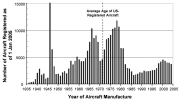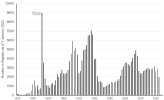skyking3286
Pre-takeoff checklist
- Joined
- Sep 29, 2012
- Messages
- 416
- Display Name
Display name:
skyking3286
From the bottom feeder perspective here: The Vashon Ranger and the RV-12 are well in the range of the price points here, but the barriers to owning an airplane are so high that they will never achieve the volume needed to get the prices down. Take away all the new shining goodies in the OP - and you end up with a 1975 Cessna 172 for a lot less. So, it's not the airplane. It's the culture, our society which moved past aviation to other pursuits and the costs of ownership. Ron is right- you pay a up to a quarter of the value of these "entry" planes every year in hangar, insurance and maintenance. Not to mention gas, oil, training and all the other stuff. Engine overhauls start at $20,000 for a simple four cylinder. Want to repaint a plane? Need to replace an altimeter. . . those WW2 suplus instruments are gone and it's 1K for a new one now. Put a new interior in it? Costs go up.
People may want to own until they look at a commercial $150 R/T flight from Seattle to LA and realize that's only a half month of a hangar shed and there is no way they can fly themselves with the weather and the dollars. There was a time in the 1950s when private airplanes could give airlines a run for their money. No longer. As soon as airline fares when down, the end of mass general aviation was in sight. The safety record of those 1950's years also sealed the deal.
We've had a lot of LSA ultralights that get people into the air for fewer dollars but after the explosion in the 1978 era, they went downhill to a small market of hobbyists. Look at Oshkosh, and it's obvious that the average American is no longer something that is being a part of the market. We used to say that a middle class income could afford to fly, build a FlyBaby or Piet or get a classic and restore it. Perhaps. But there is change. You don't hear that anymore in marketing - dollars and the use and value of our time has changed. You can buy a top of the line EV sedan and use it every day and still not get close to the cheapest new airplane that will spend most of its life on the ground. Another past example: American Champion produced a new Aeronca Champ and the price was set at $4,995 in 1971. People said they wanted a low-cost airplane. They had 10,000 letters come in, and you could reserve a spot on the assembly line for $500. Problem was only 10 or 12 letters had the $500 deposit. Ended up with 70 or so 7ACAs on the ramp. A paint shop fire, a poor low cost Franklin engine and a 500% increase in the product-liability insurance made the price go up 40% to $7,130 (which was $2,000 less than a new Cessna 150 at the time) and that experiment was done. Plus the competition from newly restored old Champs which had a better engine was pretty significant. The new owners of ACA totally forgot that and tried again to produce a 7EC LSA just a couple of years ago. They put a heavy interior in it and ruined the useful load and priced it out of the market and it ended up being a single place plane with only a couple of buyers.
Cessna had the same experience with the $100K 162 LSA program, that ended up being $149,000 and a 1,000 deposits disappeared down to well, 192 planes (please, I know some people had problems with the production choices but still, for a price people will buy despite loud opinions about that). Delays and design changes made for a slow roll out and people bailed. They made a press release to move it up to the primary category, which would raise the useful load, open up the European market and make it into the trainer it could be (and still is here in Renton) but the pencil pushers said no. Textron ended up crushing new airplanes at the end, which said there was more money for the stock holders selling $359,000 Skyhawks and Citations. Only 175 or so have survived the crusher and ham fisted students so far. Cessna and Piper will never produce a lower cost airplane again, certainly not like the OP. These are still hand made, one at a time, sort of vehicles. That's expensive.
These are historical tales that need to be remembered. Wanting low cost and putting the dollars up front to buy it are two different ideas. So I guess I reject the whole premise of the question before us. As soon as the current flood of new money and flight schools trying to fill airline seats reaches the end of the road, aviation will settle back, as it always has, to the hobby it always was - with hand me down equipment as the new planes in the fleet age down to being "affordable" - in a matter of fashion. Which brings us back to that 1975 Cessna 172 for those who have the passion for flight. If only there are enough FAA licensed mechanics, shops and suppliers to keep them going. And affordable hangars.
People may want to own until they look at a commercial $150 R/T flight from Seattle to LA and realize that's only a half month of a hangar shed and there is no way they can fly themselves with the weather and the dollars. There was a time in the 1950s when private airplanes could give airlines a run for their money. No longer. As soon as airline fares when down, the end of mass general aviation was in sight. The safety record of those 1950's years also sealed the deal.
We've had a lot of LSA ultralights that get people into the air for fewer dollars but after the explosion in the 1978 era, they went downhill to a small market of hobbyists. Look at Oshkosh, and it's obvious that the average American is no longer something that is being a part of the market. We used to say that a middle class income could afford to fly, build a FlyBaby or Piet or get a classic and restore it. Perhaps. But there is change. You don't hear that anymore in marketing - dollars and the use and value of our time has changed. You can buy a top of the line EV sedan and use it every day and still not get close to the cheapest new airplane that will spend most of its life on the ground. Another past example: American Champion produced a new Aeronca Champ and the price was set at $4,995 in 1971. People said they wanted a low-cost airplane. They had 10,000 letters come in, and you could reserve a spot on the assembly line for $500. Problem was only 10 or 12 letters had the $500 deposit. Ended up with 70 or so 7ACAs on the ramp. A paint shop fire, a poor low cost Franklin engine and a 500% increase in the product-liability insurance made the price go up 40% to $7,130 (which was $2,000 less than a new Cessna 150 at the time) and that experiment was done. Plus the competition from newly restored old Champs which had a better engine was pretty significant. The new owners of ACA totally forgot that and tried again to produce a 7EC LSA just a couple of years ago. They put a heavy interior in it and ruined the useful load and priced it out of the market and it ended up being a single place plane with only a couple of buyers.
Cessna had the same experience with the $100K 162 LSA program, that ended up being $149,000 and a 1,000 deposits disappeared down to well, 192 planes (please, I know some people had problems with the production choices but still, for a price people will buy despite loud opinions about that). Delays and design changes made for a slow roll out and people bailed. They made a press release to move it up to the primary category, which would raise the useful load, open up the European market and make it into the trainer it could be (and still is here in Renton) but the pencil pushers said no. Textron ended up crushing new airplanes at the end, which said there was more money for the stock holders selling $359,000 Skyhawks and Citations. Only 175 or so have survived the crusher and ham fisted students so far. Cessna and Piper will never produce a lower cost airplane again, certainly not like the OP. These are still hand made, one at a time, sort of vehicles. That's expensive.
These are historical tales that need to be remembered. Wanting low cost and putting the dollars up front to buy it are two different ideas. So I guess I reject the whole premise of the question before us. As soon as the current flood of new money and flight schools trying to fill airline seats reaches the end of the road, aviation will settle back, as it always has, to the hobby it always was - with hand me down equipment as the new planes in the fleet age down to being "affordable" - in a matter of fashion. Which brings us back to that 1975 Cessna 172 for those who have the passion for flight. If only there are enough FAA licensed mechanics, shops and suppliers to keep them going. And affordable hangars.
Last edited:



